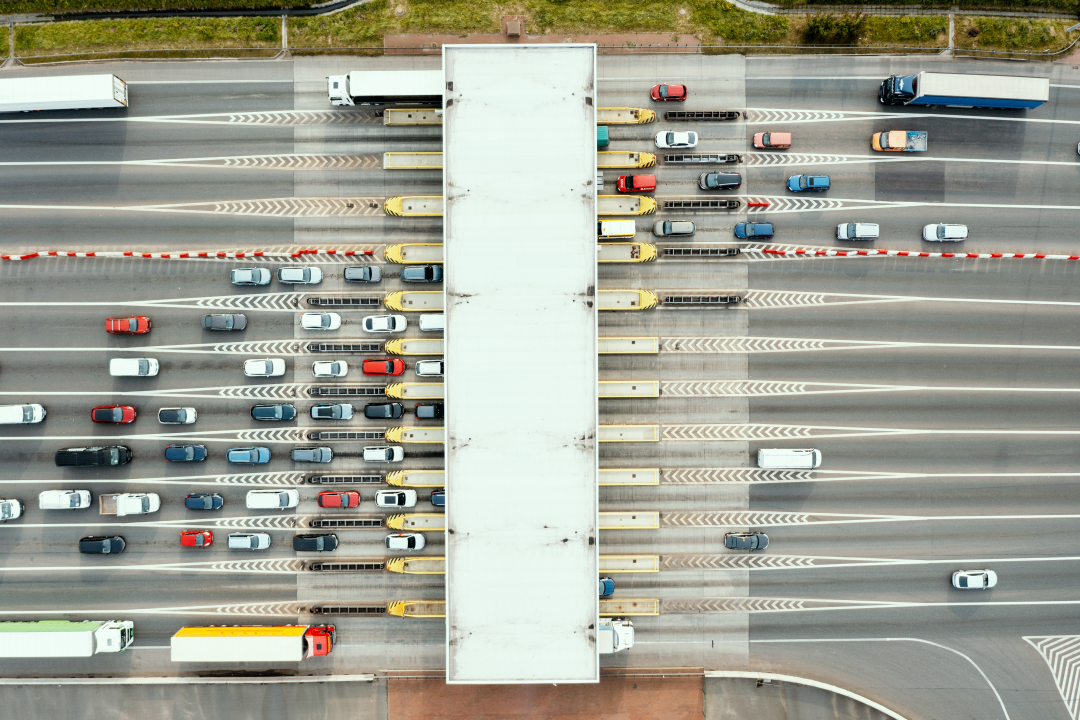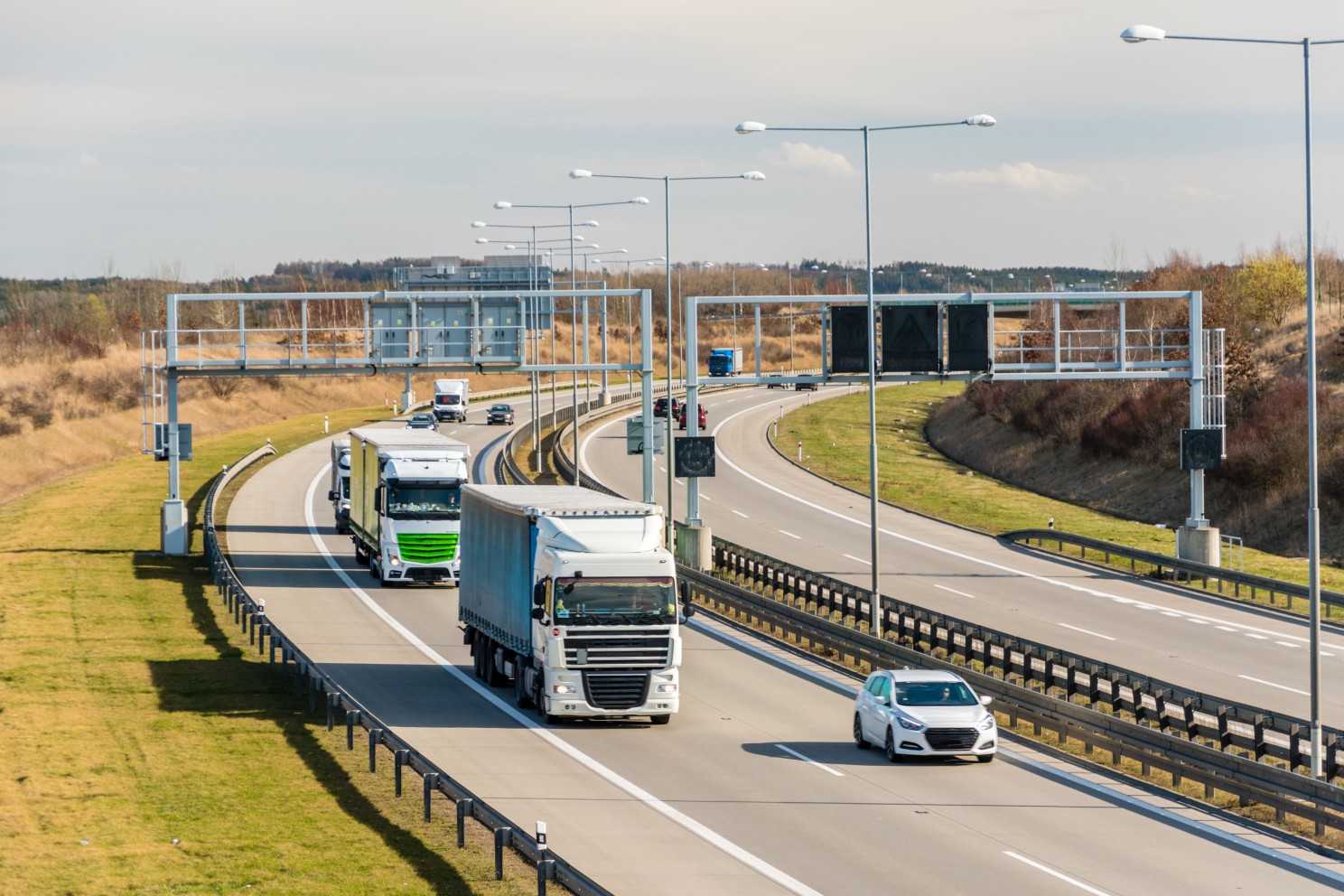
Susie Jones
Comprendre les nouveaux tarifs de péage pour les camions en Allemagne
Créée: 12/08/2024
•
Mise à jour : 12/08/2024
Avec les changements en cours du système de péage pour les camions en Allemagne, il est facile de se perdre dans les nombreuses modifications et réglementations. Près de [83%] (https://impargo.de/en/blog/germany-toll-collect-hgv-3.5t-2024) des trajets locaux de camions, couvrant environ 200 kilomètres, sont déjà effectués sur des routes à péage, ce qui souligne l'impact des péages allemands sur les dépenses des flottes.
Avec l'augmentation des tarifs de péage, ces nouveaux changements touchent de plein fouet les entreprises de flotte. Les changements apportés aux péages en 2023 et 2024 résultent du soutien apporté par le gouvernement allemand à la loi sur l'amendement des péages, qui adopte les dispositions suivantes :
Nouveaux tarifs de péage
L'introduction de péages sur les émissions de CO2
Suppression de l'exonération de péage pour les véhicules au gaz naturel
Extension du péage aux véhicules dont le poids total autorisé est supérieur à 3,5 tonnes.
1er janvier 2023 changements
Les tarifs de péage ont augmenté au début de l'année 2023. Trois facteurs ont été déterminants :
Nombre d'essieux
Classe d'émissions
Poids total autorisé de l'ensemble des véhicules.
Le 1er décembre 2023 change
En décembre, les classes d'émissions de CO2 ont été introduites comme nouveau critère tarifaire. Calculée sur la base d'une surtaxe de 200 euros par tonne d'émissions de CO2, cette surtaxe s'applique à tous les véhicules dont le poids total autorisé est supérieur à 7,5 tonnes. Les montants individuels de la surtaxe, en plus du péage actuel, dépendent de la classe d'émission.
Classe 1 - poids lourds dont les émissions de CO2 sont les plus élevées et qui, par conséquent, sont soumis à la surtaxe la plus élevée possible. [TollCollect] (https://www.toll-collect.de/en/tollcollect/tchomepage.html), qui perçoit les péages pour les camions en Allemagne, classe tous les véhicules immatriculés dans cette classe d'émission - les opérateurs de flottes doivent les contacter pour demander une meilleure classification s'ils sont éligibles.
Classes 2 et 3 - Ces deux classes sont attribuées lors de la saisie des détails du véhicule sur le portail TollCollect.
Classe 4 - Camions à faibles émissions, par exemple les véhicules au gaz naturel.
Classe 5 - Camions à émissions nulles.
Le 1er janvier 2024 change
Le 1er janvier 2024, l'exemption de péage pour les véhicules fonctionnant au gaz naturel ne sera plus applicable.
1er juillet 2024 changements
Les péages seront dus pour tous les véhicules dont le poids total techniquement autorisé est supérieur à 3,5 tonnes. Il existe quelques exceptions à ce nouveau changement :
Véhicules sans émissions dont le poids total techniquement admissible est supérieur à 4,25 tonnes.
Véhicules utilitaires lourds sans émissions - Cette exemption est valable jusqu'à la fin décembre 2025.
Véhicules utilisés par des entreprises commerciales - Applicable aux véhicules dont le poids total est inférieur à 7,5 tonnes.

Préparer votre flotte aux changements de juillet
Avant le 1er juillet, vous devrez vérifier si vos véhicules sont soumis au péage et, le cas échéant, comment vous souhaitez payer le péage.
Vérifiez vos véhicules
Vérifiez la première partie du certificat d'immatriculation du véhicule dans le champ F1. Si votre véhicule a une masse maximale en charge techniquement admissible (MMCTA) de plus de 3,5 tonnes, vous devez payer le péage. Les poids lourds dont la masse en charge maximale techniquement admissible est inférieure ou égale à 3,5 tonnes ne sont pas soumis au péage.
Combinaisons de véhicules - si le véhicule tracteur a un PTMLM de plus de 3,5 tonnes, vous êtes soumis au péage. Un ensemble dont le PTMLM est supérieur à 3,5 tonnes n'est pas soumis au péage si le véhicule tracteur a un PTMLM inférieur ou égal à 3,5 tonnes.
Les exigences en matière de péage s'appliquent aux véhicules destinés ou utilisés pour le transport routier.
Les entreprises commerciales sont exemptées de péages sous certaines conditions.
Comment payer le péage
Le moyen de paiement le plus pratique est l'unité embarquée (OBU), fournie par Toll Collect, les prestataires du service européen de télépéage (SET) ou leurs partenaires commerciaux.
Pour payer avec un OBU, il faut s'enregistrer auprès de Toll Collect et prendre un rendez-vous pour l'installation - après l'installation, régler le poids sur "<7,5 tonnes". Avec un OBU, la collecte automatique se fera sur les autoroutes et les routes fédérales à partir du 1er juillet 2024.
Vous pouvez également payer le péage sur le [site web] (https://www.toll-collect.de/en/tollcollect/tchomepage.html) ou via l'[application] (https://apps.apple.com/gb/app/toll-collect-mauteinbuchung/id1321965602) Toll Collect avant de commencer votre voyage.
Mon véhicule professionnel est-il exempté des nouveaux tarifs de péage allemands ?
Pour bénéficier de l'exonération des artisans, il faut remplir les conditions suivantes :
Seuls les employés de l'entreprise peuvent conduire le véhicule.
Les matériaux, équipements ou machines transportés doivent être nécessaires à l'exécution des services et travaux de l'entreprise commerciale.
Les produits artisanaux transportés doivent être produits, transformés ou réparés dans l'entreprise de l'artisan.
Vous pouvez enregistrer vos véhicules commerciaux en ligne sur [Toll Collect] (https://www.toll-collect.de/en/tollcollect/tchomepage.html). Les entreprises commerciales peuvent obtenir de plus amples informations sur les exceptions sur la page [FAQ] (https://www.toll-collect.de/en/tollcollect/service/fragen_antworten/mautaenderungen2023und2024/handwerkerausnahme/p1745faqhandwerkerausnahme.html) de Toll Collect.
Les camions peuvent-ils circuler le dimanche en Allemagne ?
Il existe des interdictions de circuler pour les camions commerciaux à certaines heures afin de réduire le trafic et d'assurer la sécurité des routes. L'interdiction s'applique le dimanche, ce qui signifie que les conducteurs de camions pesant plus de 7,5 tonnes ne peuvent pas les déplacer entre 12 heures et 22 heures. En outre, une interdiction de circuler s'applique également aux jours fériés suivants :
Jour de l'An - 1er janvier
Vendredi saint - 18 avril
Lundi de Pâques - 21 avril
Fête du travail - 1er mai
Ascension - 29 mai
Pentecôte - 8 juin
Journée de l'unification allemande - 3 octobre
Noël et lendemain de Noël - 25 et 26 décembre
Pendant la principale période de vacances, du 1er juillet au 31 août, l'interdiction de conduire des camions s'applique le samedi, ce qui signifie que les conducteurs de camions ne sont pas autorisés à conduire entre 7 heures et 20 heures, lorsqu'il y a un grand nombre de véhicules sur les routes.



